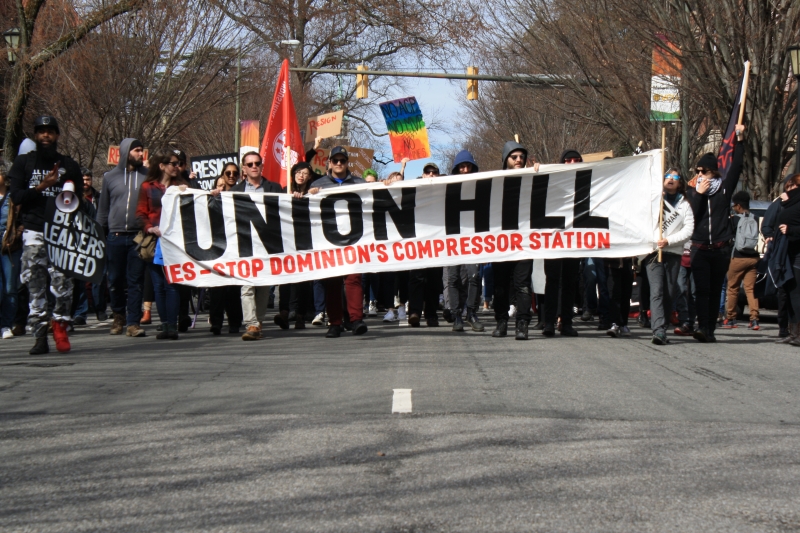The U.S. Court of Appeals for the Fourth Circuit on Tuesday, January 7, 2020, explicitly relied on environmental justice (EJ) concepts to vacate and remand a Virginia state air pollution permit for a compressor facility associated with an interstate natural gas pipeline. This is one of only a very few federal court decisions to address EJ expressly, and is noteworthy because of its explicit application of EJ elements.
The case, Friends of Buckingham v. State Air Pollution Control Board, involved a challenge to a Virginia permit to construct a compressor station in a historic African-American community to support conveyance of natural gas through the 600-mile Atlantic Coast Pipeline currently under construction from West Virginia to North Carolina. Under the Natural Gas Act, the U.S. court of appeals for the circuit in which a natural gas facility is proposed to be constructed or operated has “original and exclusive jurisdiction over any civil action for the review of an order or action of a . . . State administrative agency acting pursuant to Federal law to issue, condition, or deny any permit . . . required under Federal law.”
The court considered two claims: first, that the Virginia Air Pollution Control Board failed to consider electric turbines as zero-emission alternatives to gas-fired turbines; and second, that the Board “erred in failing to assess the Compressor Station’s potential for disproportionate health impacts on the predominantly African-American community of Union Hill, and in failing to independently evaluate the suitability of that site.” In a unanimous opinion, the court decided for the petitioners on both claims.
 Photo by Caitlin Morris.
Photo by Caitlin Morris.
For purposes of this blog, we’ll focus only on the latter claim.
Environmental justice practitioners will recognize the “disproportionate health impacts” language as related to the “disproportionately high and adverse human health and environmental effects” analysis requirements of Executive Order 12898, Federal Actions To Address Environmental Justice in Minority Populations and Low-Income Populations. The EO, of course, does not create a cause of action; nor in this case was there a NEPA claim under the Administrative Procedure Act (as with the few EJ cases that have made their way to federal appeals courts, such as Communities Against Runway Expansion v. Federal Aviation Administration (D.C. 2004)). The Fourth Circuit determined that the state air permit decision on health risk and site suitability (state statutory requirements) was subject to review applying an “arbitrary and capricious” standard, and thus required consideration of EJ. The court determined that potential federal and state administrative law standards of review were “virtually identical.”
The court defined “environmental justice” and, citing several court cases and a law review article, explained that the purpose of an EJ analysis is to determine whether a project “will have disproportionate impacts on minority or low-income populations.” The court observed that all parties acknowledge that the Board was “required to consider EJ in the Compressor Station Permit approval process.”
The court briefly recounted the history of the affected community established by African-Americans after the Civil War, and cited evidence of a non-white population far higher than countywide and statewide percentages. It referred to evidence in the record concerning underlying health conditions.
The Virginia Department of Environmental Quality, relying on air quality standards, in a recommendation incorporated by reference in the Board’s final permit decision, stated that risks to the local community were not disproportionate in comparison with the overall quality of air breathed in the entire state, and that ambient increases in pollutant concentrations from the facility would be slight. This, as we shall see, was not sufficient.
The court found the Board’s EJ review insufficient in three respects. First, the court found that the Board had made no findings about the demographics of the community, and hence could not fulfill its obligations to determine whether there were disproportionate impacts on health. The record contained numerous conflicting submissions and analyses that showed minority demographics with a vast range from 22% to 84%, but the conflicts remained completely unaddressed by the Board. This failure was not, the court found, redeemed by comments by two of the Board members that assumed that the community was an EJ community, not only because this could not be imputed to the entire Board but also because this assumption was not then carried through in any analysis of health effects. Second, the Board simply relied on NAAQS and state air quality standards as sufficient to protect health. Among other things, the Board made no analysis of PM2.5 exposures and risks “to this specific EJ community” and no consideration of higher potential risk for asthma. Third, the very thin record for the site suitability element under state law relied on a DEQ checklist which noted only that the area was “sparsely populated” and a “forest” land use (rather than residential), neglecting the 60 homes within one mile of the site.
The court concluded: “To be clear, if true, it is admirable that the Compressor Station ‘has more stringent requirements than any similar compressor station anywhere in the United States’ . . . and that residents of Union Hill ‘will be breathing cleaner air than the vast majority of Virginia residents . . . ’. But these mantras do not carry the day. What matters is whether the Board has performed its statutory duty to determine whether this facility is suitable for this site, in light of EJ and potential health risk for the people of Union Hill. It has not.”
